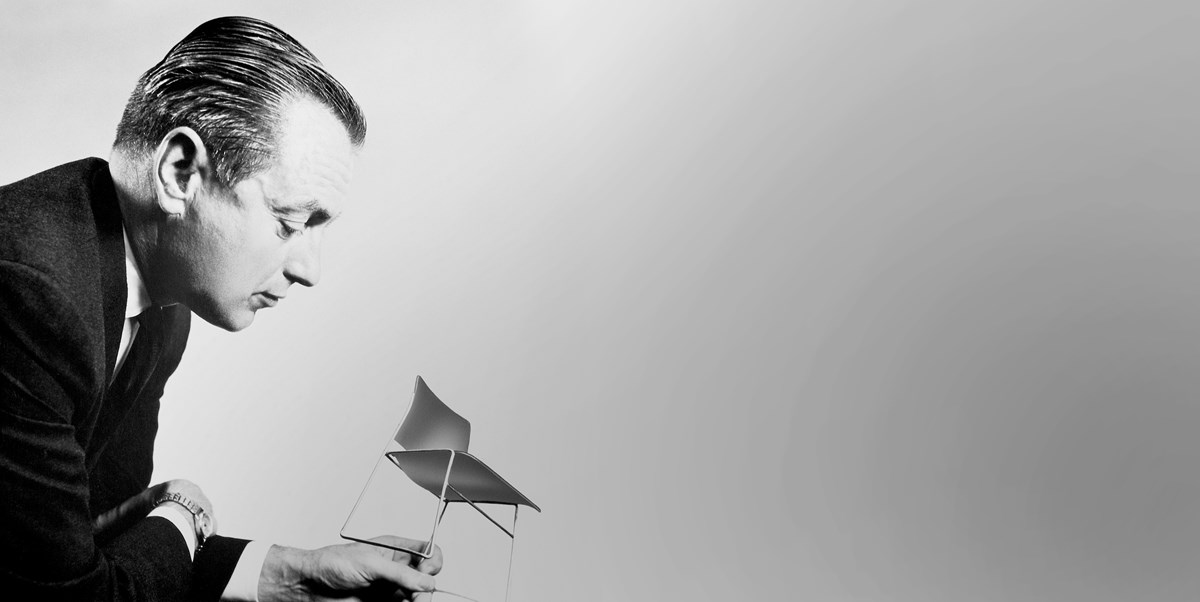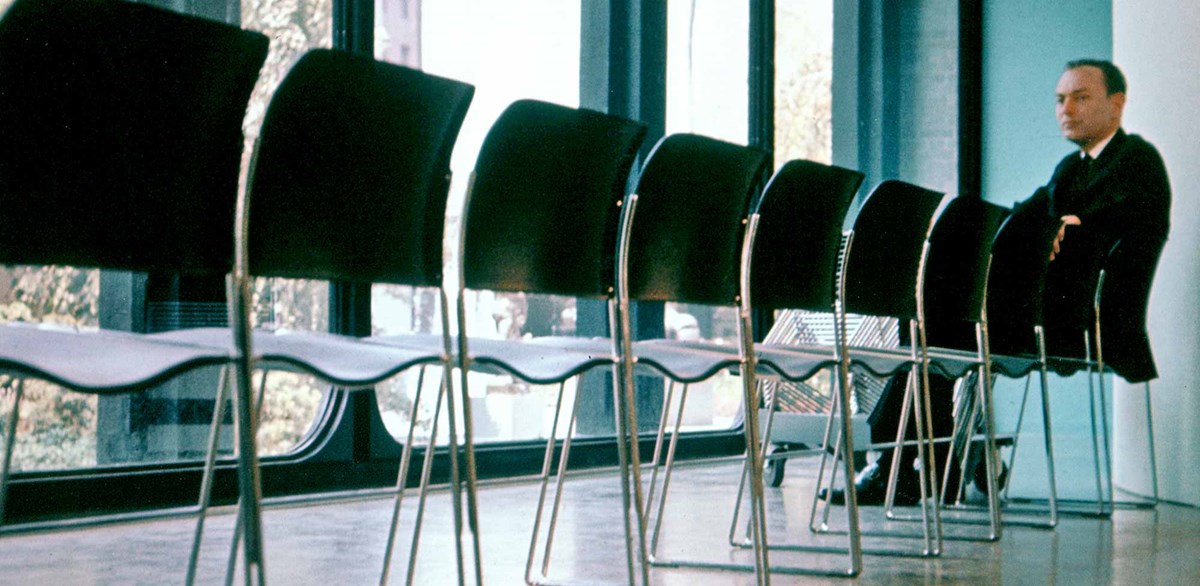40/4 Chair
- Designer:
- David Rowland
- Brand:
- Howe
We don't appear to have any products related to your search term. Please try again.
Shipping and discount codes are added at checkout.

Designer
David Rowland was a revolutionary industrial designer and inventor. His elegant, perfectly engineered 40/4 chair is one of the most significant and masterful designs of the 20th century.
"The service of design to the world is to be purposeful and problem-solving."
David Rowland was born February 12th, 1924 in Hollywood California. Not long later, the family moved to Stockton, CA where David's father, Earl, becomes director of the Pioneer Galleries and Haggin Museum, a local history and art museum. Meanwhile, David begins studying drafting at Stockton High School. By age 16, he is given a special waiver by Lazlo Moholy-Nagy to attend a summer session of the Basic Bauhaus Course for college students and professionals. Rowland calls it the greatest summer of his life. Moholy-Nagy’s teachings remain with Rowland for the rest of his life and shape his own design philosophy. His work becomes that of innovator, problem solver, futurist, minimalist and artist.
In 1942, Rowland graduates from high school, where he is Art Director of the yearbook. For the next 8 months he works as a detail draftsman for Rheem Manufacturing in Stockton, drawing engineer’s plans for bomb-making machinery and submarine plans. Come 1943, he volunteers for the Army Air Corps during World War II. He flies combat overseas, some of his missions being 12 hours long in unbearable seats. Rowland vows that if he survives the war he will design more comfortable seats.
On his return from the war in 1946, Rowland enrolls at Principia College in Elsah, Illinois. He loves the school and its beautiful campus, stating “War was hell. Principia was heaven.”. From there, he begins graduate study at the Cranbrook Academy of Art, described as a breeding ground for American Modernism , attended by other esteemed students including Charles and Ray Eames and Florence Knoll. During his studies there, he designs the Magic Carpet Chair and License Plate Gas Cap Cover. The latter is unpatented, and the idea is stolen by an automobile company, used on over 700 million cars. Following graduation, he receives his first commission: to design an experimental chair for the No-Sag Spring Company in Detroit. His design, the Transparent Chair, was shown at the National Home Furnishing Show in New York and received much acclaim. Due to this, Charles Eames offers David a job, however, he declines.

Not long into freelancing, Rowland designs a chandelier that wins an Illuminating Engineering Society Award. He also creates outdoor furniture seating and the revolutionary Spider chair. During the summer of 1995, he accepts freelance work drawing architectural renderings for Norman Bel Geddes, he amazingly creates enough renderings to cover the walls of a 20 foot cubic room. Succeeding this, he invents the Drain Dry Cushion, the royalties from which pay his rent for the next 15 years.
By 1955, Rowland conceives of a compactly stackable chair. He will make countless drawings and 32 handmade models perfecting his design. He shares his chair designs with Florence Knoll, who offers patient critique, guidance, and encouragement. To refine this design, he develops the Maximum Order Dimensioning System, or MOD, a measurement system for making products that are the most comfortable for the greatest number of people. The dimensions of the 40/4 Chair are based on the MOD. This particular product is worked on for 8 years, once completed, the chair is named the 40/4 because 40 chairs stack in a height of 4 feet. The first 40/4 order is for 17,000 chairs. It was awarded the huge honor of International Design Award from the American Institute of Interior Designers.
Rowland remained keenly aware of the changing times so that he could recognize and conceive the most appropriate solutions to new challenges he identified around him. Simplicity, essential components, ease and adaptability were equally important to Rowland. He believed that by making things better, beauty would naturally follow. Rowland admired nature’s progress toward distillation and adaptation. Designers should follow suit and engineer objects that respond to the environment, the realities of production and consumption, and the precise challenges of the present moment. Products, like nature, should perpetually evolve. Rowland believed that the purpose of the industrial designer was to build more constructive, useful products that filled a need. Rowland saw materials as opportunities. Rowland always sought in his work that which could best serve the public. In other words, design should be purposeful and problem-solving—in fact, Rowland considered this a moral obligation.